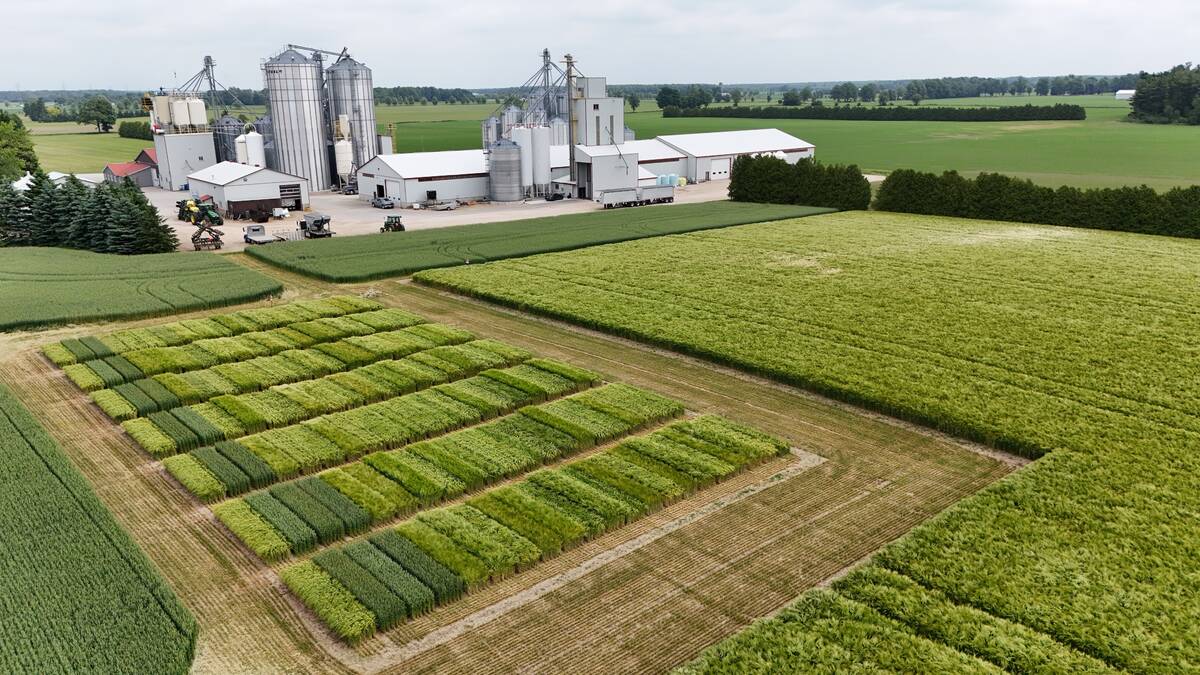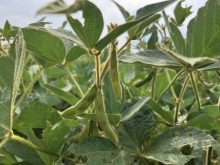One less bushel per acre, per day – that’s the end-season yield impact of planting soybeans in July, and one reason it’s critical to hedge bets if successful double-crop soybeans are the goal.
Great success is possible, according to Dave Hooker, associate professor in plant agriculture at the University of Guelph, Ridgetown campus. A 2021 research project even showed it was possible to achieve 60-bushel double-crop soybeans when virtually everything goes right.
Why it matters: Double crop soybeans can be profitable but time to maturity and dry summer weather are major challenges, research shows.
Read Also

Winter cereals beyond wheat gaining traction
Winter cereals such other than wheat, such as barley, could provide better yield and rotation options for Ontario growers.
Although this particularly high-yielding research plot is an example of possibility rather than probability, good timing and the right approach to July planting make more typical yields both possible and profitable, he says.
“In a common situation, in a typical year, we would never expect a 60-bushel crop,” says Hooker, referencing his successful 2021 research plot. It was one of many used to study the interaction of planting population, maturity group and planting date.
Maturity groups from 0.8 to 3.2 were tested along with densities from 180,000 to 360,000 seeds per acre. Planting dates ranged from ultra-early (April) to the typical post-winter wheat period. The idea, says Hooker, was to “look at the extremes” and determine if the data held up to previous research from the University of Guelph, the provincial government and Syngenta.
The results reaffirmed conventional wisdom. In the Ridgetown area, peak yields were found with soybean varieties in the 1.8 maturity group, or one full maturity group less than a standard full-season group for the area.
“It’s a common question: what maturity group should I consider for a double crop? The answer is to subtract one full maturity group. That’s one conclusion from last year,” says Hooker.
Optimal planting rates also reflect previous research conclusions.
“It’s difficult to come up with a maximum planting rate. Usually yields plateau and we cannot achieve that. It’s a linear response right up to 360 000,” he says. But the prospect of a failed or otherwise lacklustre crop is possible given factors such as early fall frost and lack of moisture at planting.
“The trick is to minimize the investment. It’s a way to reduce the risk in this high-risk crop. It depends on the grower. Having said that, the general rule of thumb is 260,000, and 300,000 plants per acre is kind of the sweet spot.”
Citing the one bushel per day loss in yield potential, Hooker says the first week of July is the optimal time to plant double-crop soybeans.
Pushing wheat harvest with shorter season varieties, early planting, and harvesting at higher moisture content can help growers hedge their bets. Waiting for moisture before planting the following soybean crop is possible if time allows. Alternatively, planting shallower at one or 1.5 inches can help with emergence in drier conditions.
“Or you just wait till it does rain. If it’s earlier than July 15 or 18, that might be an option,” says Hooker.
Interest in double-crop soybeans continues to grow. However, the threat of dry summer conditions – and the fact that double crop soybeans are often challenged to reach maturity before frost and cold weather begins to bite – growers south and west of Lucan and Woodstock are in the best position to try their luck. Yield potential north of those two areas is generally low.
Hooker says larger growers tend to be more open to double-cropping, likely because of the greater risks associated with the practice.
“There are more and more acres in [double-crop]; a really tremendous number of acres planted just north and west of London,” says Hooker.
While 60 bushels is exceptional, and 20 to 35 bushels is typical, he reiterates that early frosts and other adverse conditions can cause major losses.
“There will be zeros in there as well.”















